There is a reason why Amazon has a price to earnings ratio 16X higher than Walmart. A reason why subscription commerce companies are incredibly hot, and a reason why Dollar Shave Club was worth $1 billion with company sales of just $200 million.
Knowing your customer is the new superpower for brands and retailers. Engaging with them daily or weekly supercharges commerce. And the closer a brand connects with customers, the more valuable it becomes.
This is part one of a five-part series on omnichannel customer engagement highlighted in our new e-book, “Taps, Clicks, Bricks: Omnichannel Customer Engagement Is the New Brand Superpower.” Download the full e-book for free here.
- Buying Is Changing: Hard Data
- Shopping Is Changing: The New Customer Journey
- The New Retail: Silicon Valley and Main Street Are Converging
- Playbooks: How Top Brands and Retailers Are Winning
- Getting Started: 5 Critical Components for Success
Customer journeys are complex.
They can involve three to five screens, offline and online touchpoints, and six to 10 marketing channels. They trace nonlinear paths that start and stop in seemingly random places. Mapping them is no longer easy, if it ever was, and not nearly as profitable as marketers would like.
But today, the best brands are walking alongside their customers. They’re engaging with them deeply via signed-in experiences across three major clusters of channels:
- Mobile (Taps)
- Desktop (Clicks)
- Physical Location (Bricks)
The new omnichannel isn’t just providing experiences for customers in multiple channels, nor coordinating branding and functionality across those channels. The new omnichannel is truly knowing your customer deeply across taps, clicks, and bricks, and enabling seamless contextual engagement across them all — but especially mobile, where so many of today’s digital channels now live.
This is the new table stakes for a smart, connected, and demanding generation of consumers — but one that only a tiny minority of brands currently enable.
As buying, shopping, and retail change, we investigate how top brands are enabling known, signed-in experiences for customers across multiple channels, and then highlight the five keys to enabling your own retail or brand success.
Buying Is Changing: Hard Data
Mobile is where growth is happening, and m-commerce is in rapid growth. This is not fake news.
But context matters. Here’s the context that is helping successful brands win.
Retail Mobile Traffic Is at 56% and Growing
Mobile web traffic surpassed desktop in late 2016. In the U.S., smartphone traffic to retail sites starting passing desktop in late 2017. Add in tablets, and mobile traffic to retail sites is as high as 56% and growing, while desktop traffic is as low as 44% and dropping.
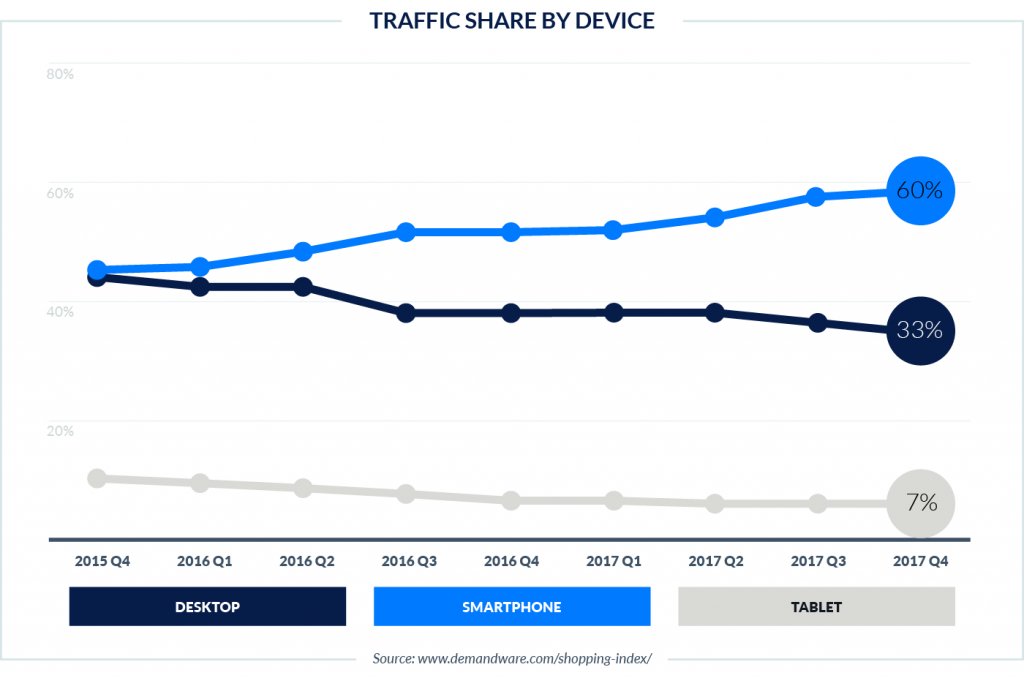
M-Commerce Will Hit $1.8 Trillion in 2018
The force is still strong with desktop retail sales in many regions. But m-commerce is clearly growing, and quickly.
In fact, globally it’s bigger than desktop commerce, thanks to massive countries like China and India where digital commerce is not just mobile-first, it’s mobile-only. (In fact, by itself China made up 67.1% of all m-commerce sales worldwide in 2017.) M-commerce will be a full 64% of retail digital sales in 2018 thanks to massive jumps of 40.3% in 2017 and 33% again this year.
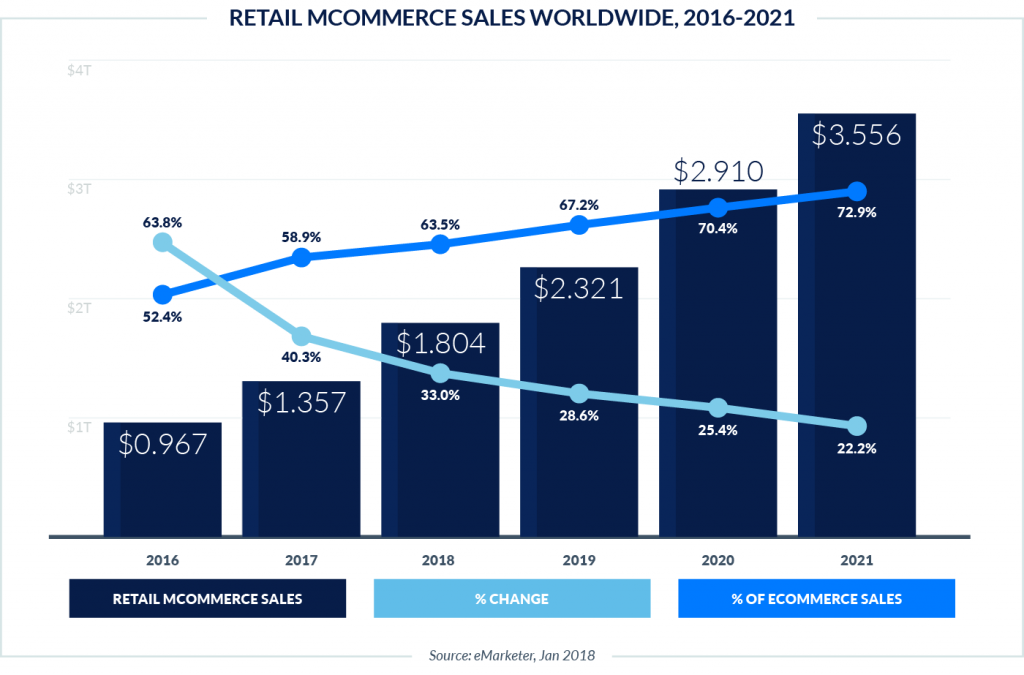
Again, context matters. And location.
North America and Western Europe are different markets with different retail habits. Thanks to a history of desktop computers, more conversions in these markets happen on the big screen on the desk rather than the small screen in the hand.
This means that brands and retailers face dual challenges.
First, they have to recognize the growth rate of m-commerce, understand that mobile-only countries are showcasing a future state for most of the world, and prepare for it. But secondly, they have to understand the context for commerce in all of the regions they operate, and operate equally effectively in each of them.
US Desktop E-Commerce Still Strong: 61% of Purchases
Mobile traffic is up, and it will continue to increase. But in all the giddiness around the growth of mobile, it’s important not to lose sight of the fact that desktop still drives the lion’s share of digital purchases — at least, in the United States.
In spite of the fact that desktop drove a minority of retail visits last holiday season, the big screen punched above its weight in terms of consummated purchases: 61%.
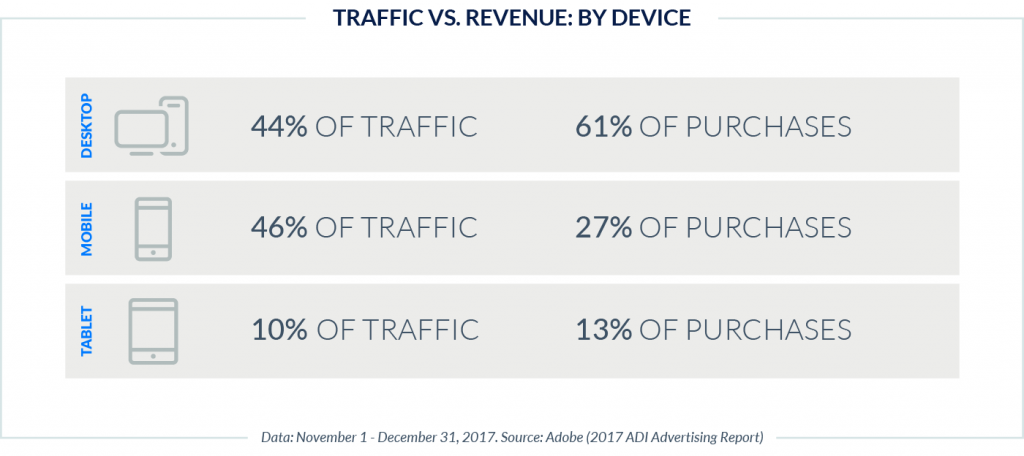
Interestingly, 26-30% of all desktop conversions are preceded by a mobile click, according to data from more than 5,000 retailers.
But Bricks And Mortar Are Still 88% Of Retail
E-commerce is growing. The chunk that is mobile-driven is exploding. But the big picture is still the big picture.
While total retail e-commerce sales will hit $2.8 trillion in 2018, total retail sales are in the neighborhood of $23 trillion to $25 trillion. So while massive growth rates are forcing retailers and brands to pay attention to both e- and m-commerce, the in-store story is also critical for success.
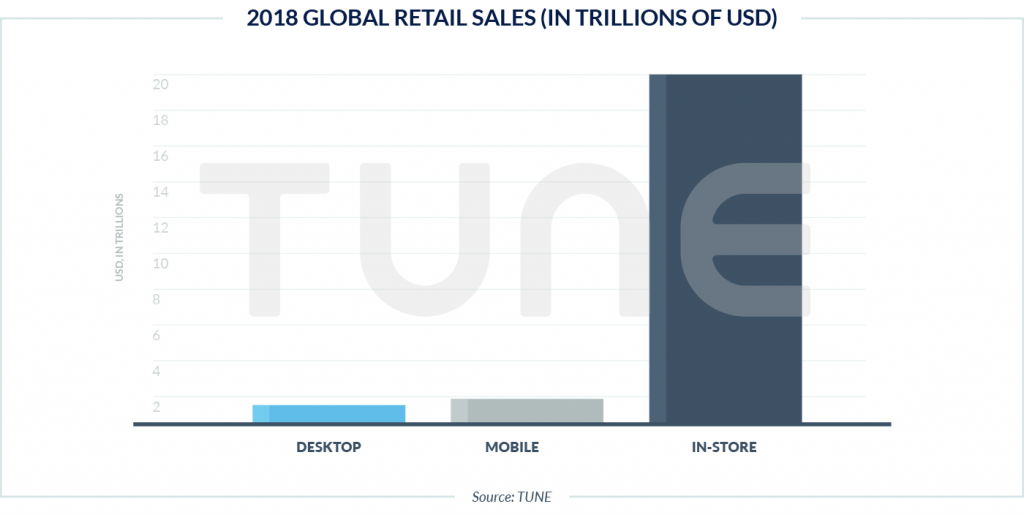
In spite of that massive disparity, however, shopping is definitely changing. More on that next week.
. . .
. . .
To be continued next week: Shopping Is Changing: The New Customer Journey.
This is part one of a five-part series on omnichannel customer engagement highlighted in our new e-book, “Taps, Clicks, Bricks: Omnichannel Customer Engagement Is the New Brand Superpower.” Download the full e-book for free here.
Author
Before acting as a mobile economist for TUNE, John built the VB Insight research team at VentureBeat and managed teams creating software for partners like Intel and Disney. In addition, he led technical teams, built social sites and mobile apps, and consulted on mobile, social, and IoT. In 2014, he was named to Folio's top 100 of the media industry's "most innovative entrepreneurs and market shaker-uppers." John lives in British Columbia, Canada with his family, where he coaches baseball and hockey, though not at the same time.

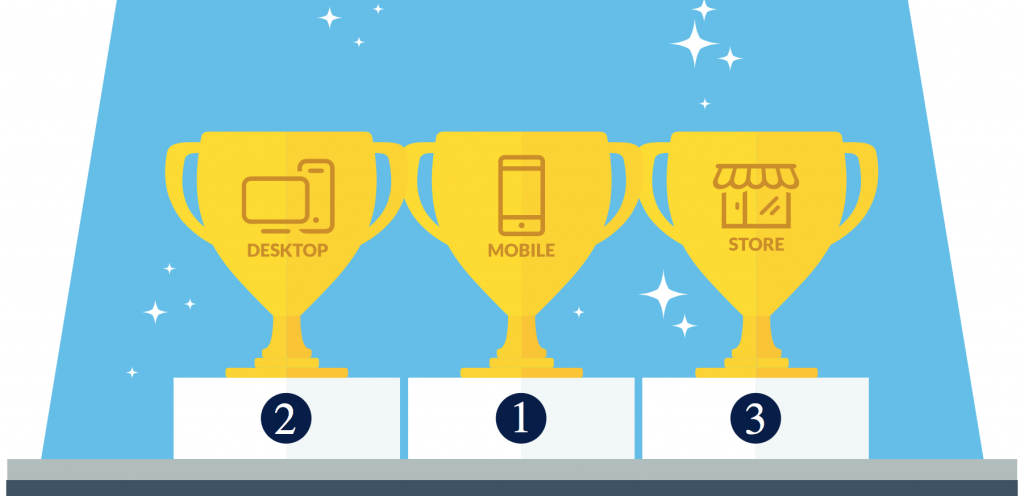
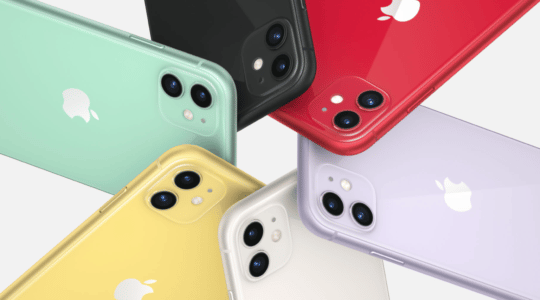


Leave a Reply
You must be logged in to post a comment.